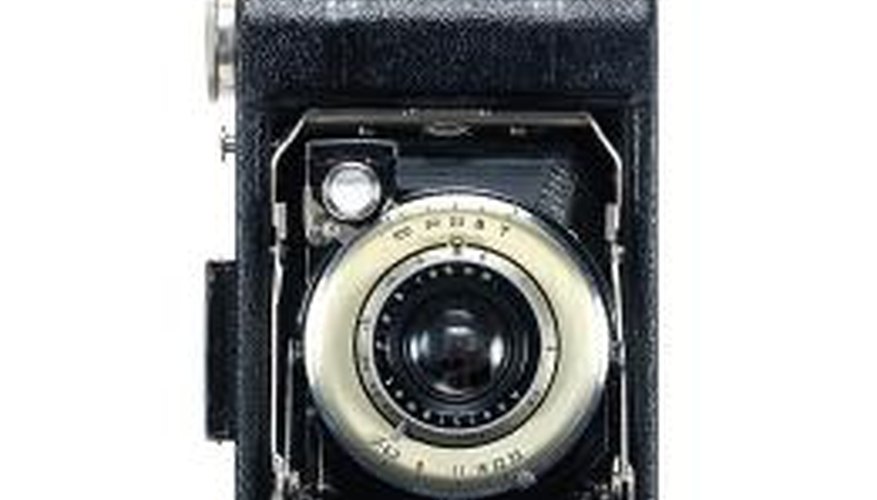In the 21st Century, film cameras have become nearly obsolete in the general consumer market. For instance, Japanese camera maker Nikon ceased production of many of its film camera bodies in 2006 to focus on the digital market. However, many purists prefer film cameras to digital cameras, and film cameras have both advantages and disadvantages.
Better Image Quality
Digital camera images are made up of thousands of picture elements known as pixels, tiny squares that combine to form a complete image. Many digital cameras produce good quality images, and high-end digital camera can produce extremely high-resolution images, according to PC Tech Guide. However, pixels in a digital image occur in regular patterns that are more easily distinguished by the human eye than the random patterns that occur with film images, especially with images taken with less-expensive models. Many advocates of film photography also consider film images to be sharper, with crisper black-and-white resolution and richer colour saturation, according to "PC and Tech Authority."
- Digital camera images are made up of thousands of picture elements known as pixels, tiny squares that combine to form a complete image.
- Many advocates of film photography also consider film images to be sharper, with crisper black-and-white resolution and richer colour saturation, according to "PC and Tech Authority."
No Batteries Needed
Digital cameras are very demanding of the battery power they use. Lithium and rechargeable batteries are required to provide reasonable battery life; alkaline batteries are often spent after only a few hours of use. Spent batteries present a serious environmental challenge; they often wind up in landfills where they leach toxic substances that can make their way into the soil and groundwater. By contrast, old-school single-lens reflex film cameras require no batteries if you are shooting outdoors in natural daylight.
- Digital cameras are very demanding of the battery power they use.
- Lithium and rechargeable batteries are required to provide reasonable battery life; alkaline batteries are often spent after only a few hours of use.
Other Film Advantages
Film cameras are often more durable and hardy than digital cameras; they are more able to stand up to heat, cold, and inclement weather, according to "The Guardian." In addition, film cameras do not suffer from "shutter lag," the gap between the time you press the shutter button and the camera actually snaps the photo. Shutter lag can cause you to miss the shot, especially when your subject is a moving target, such as an animal or a small child.
Viewing Your Images
Digital cameras have a major advantage over film cameras, especially if your image that is difficult to capture: you can view your images immediately. If your subject closed her eyes just as you were squeezing the shutter, or if you cut the top off the trees in the landscape scene you were shooting, you can simply delete the misaligned image and try again. If you're in a difficult lighting situation, you can know immediately whether you need to readjust your settings for proper exposure. By contrast, you must wait until your film images are developed to see whether you captured the shot you want or missed it. The process of developing film pictures can require hours if you have your own darkroom, and days or weeks if you must send your film off to a commercial developer.
- Digital cameras have a major advantage over film cameras, especially if your image that is difficult to capture: you can view your images immediately.
- By contrast, you must wait until your film images are developed to see whether you captured the shot you want or missed it.
Photo Storage, Editing and Sharing
Although photo albums of film images represent a treasure trove of special memories for many individuals and families, storing them requires much more space than storing digital images, which can reside on a reusable memory card, or as files on a CD, flash drive or even your computer's hard drive. If you have editing software on your computer, you can crop, resize and edit digital images readily. Sharing digital images is as easy as creating a new CD or flash drive of an entire album, or sending individual messages by e-mail. You may also print whatever digital images you choose, either on a home printer or by sending them to a commercial developer. On the other hand, digital photos can accidentally become erased or become unreadable if technology renders their format obsolete. Photos can fade, but if you keep the negatives, you can make fresh prints from them.
- Although photo albums of film images represent a treasure trove of special memories for many individuals and families, storing them requires much more space than storing digital images, which can reside on a reusable memory card, or as files on a CD, flash drive or even your computer's hard drive.
